The 66 Most Stunning Science Pictures Of 2013
In September, visitors took pictures of tidal waves created by a severe typhoon in Hangzhou, in Zhejiang province of China. The storm killed two people in the Philippines and injured nine people in Taiwan.

British photographer Tim Flach created a series called "More Than Human," which captures the emotions of wild creatures through intensely close shots, including this stunning picture of a tiger drying off.
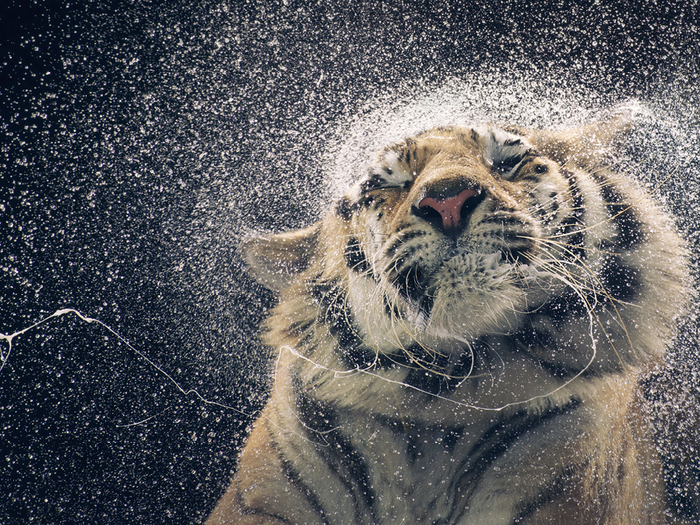
In January, Sir Ranulph Fiennes and his five-man team set off to cross the Antarctic continent during the winter months — a trek that had never been attempted before. Here, their ship reaches the first pack ice, large pieces of ice that have been pushed together into a single mass.
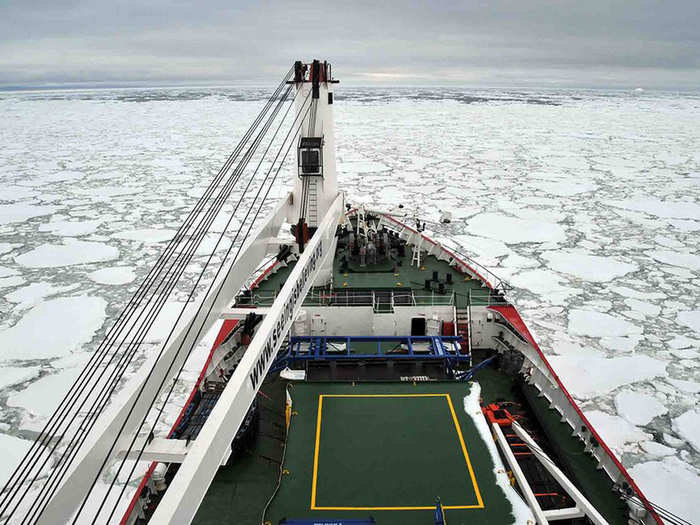
This year the public discovered that Glass Gem corn, a unique variety of rainbow-colored corn, can be purchased online through Native Seeds/SEARCH, a non-profit conservation organization.

Upon completion, the Giant Magellan Telescope will boast a resolving power 10 times greater than that of NASA's Hubble Space Telescope. This is just an artist's rendering, but the real thing is expected to be up and running in northern Chile in 2020.

Here's the Aurora borealis photographed in the early morning hours in the Arctic Circle. Also known as the Northern Lights, the spectacular light show is created when fast-moving charged particles from the sun hit the Earth's magnetic field at its poles. The image was published in the new book, "Beautiful World," by Lonely Planet.
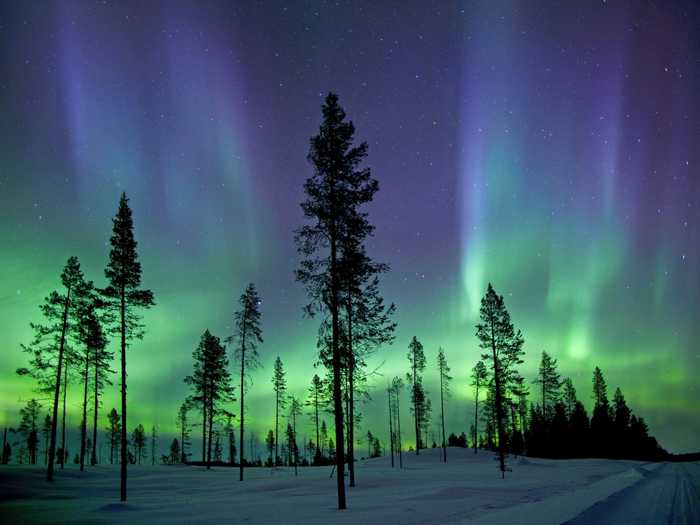
Nick Brandt took mesmerizing photographs of birds and bats at Tanzania's Lake Natron that look as if they have turned to stone. They're not really stone, but have been made "rock hard" from the high levels of soda ash and salt in the lake
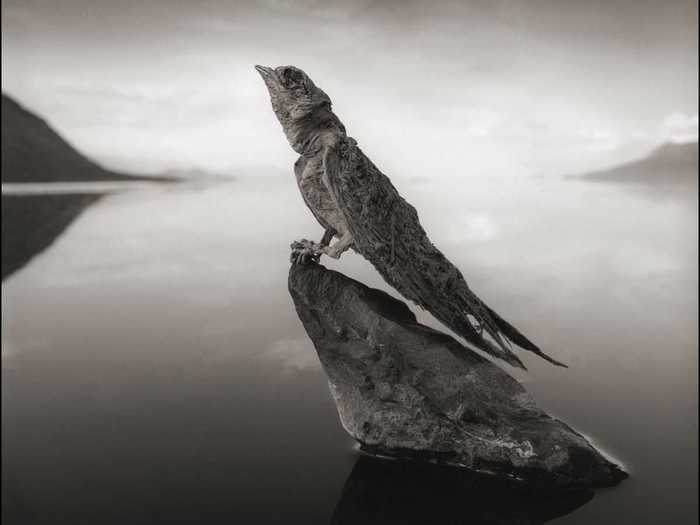
Journalist Justin Catanoso accompanied tropical biologist Miles Silman and his team on a hike through Manu National Park to experience the wonders of Peru's tropical forests. A breathtaking 13,000 feet above sea level, they started their hike above the clouds.
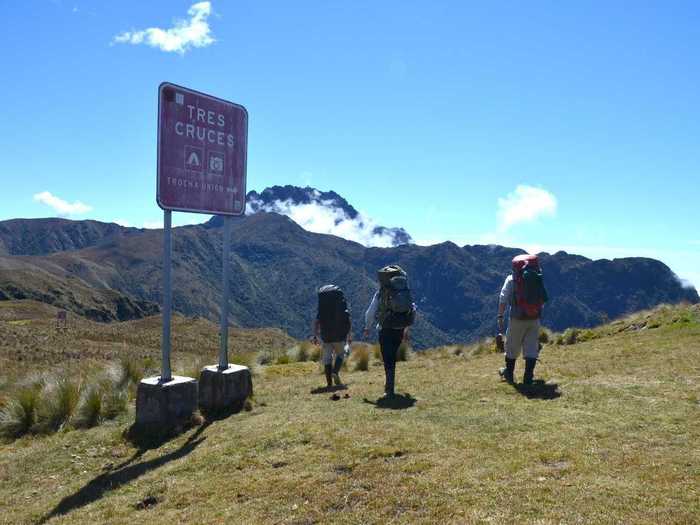
This composite image, taken in November during a solar eclipse, shows the sun behind the moon, combined with the outflow of the solar corona — the charged particles flowing out of the sun's surface that we see during the eclipse when the actual mass of the star is obscured.

Firefighters put out a raging fire in a Chicago warehouse on Jan. 23, but the bitter cold temperatures turned it into an ice castle.
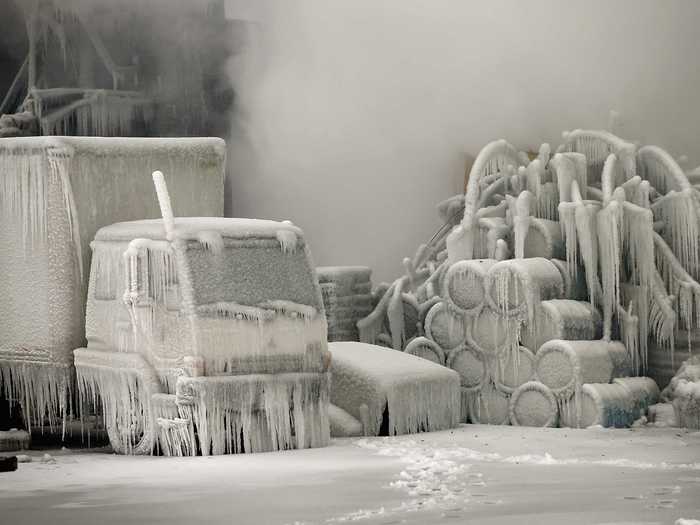
Eruptions at Mount Etna this year have changed the shape of its vent, causing it to blow perfect 100-meter-wide (328 feet) smoke rings.
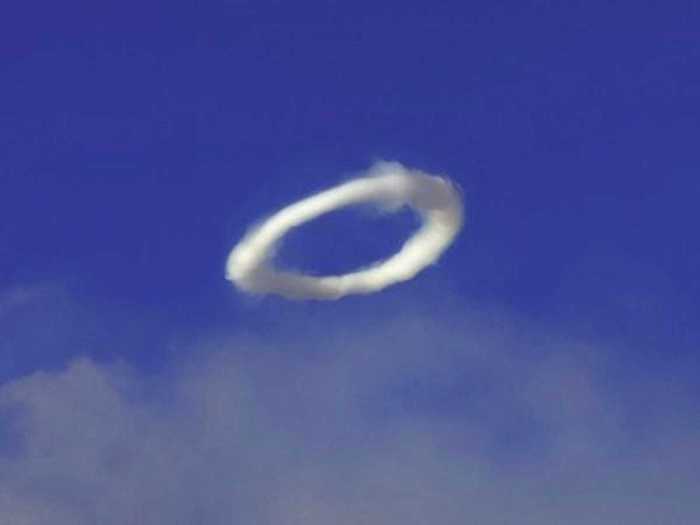
The Strokkur geyser in Iceland erupts every four to eight minutes, blasting water up to 130 feet into the air. Hot magma under the Earth heats water until it spews out of a hole in the ground.
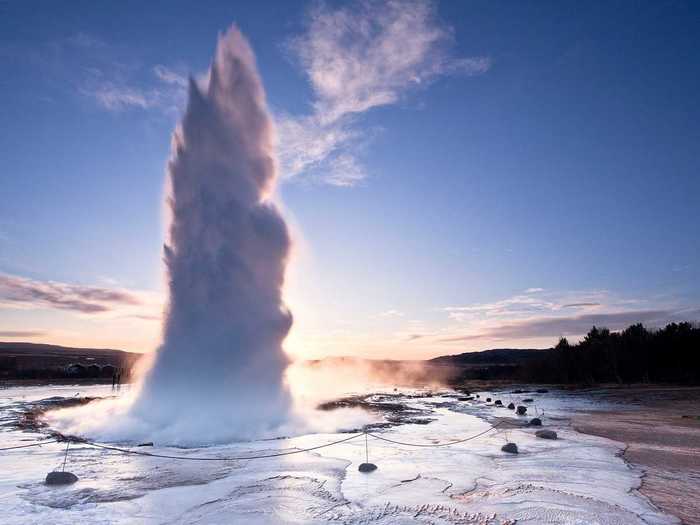
In May, scientists captured the first images of the hydrogen bond, which holds our DNA together and gives water its unique properties, including surface tension.
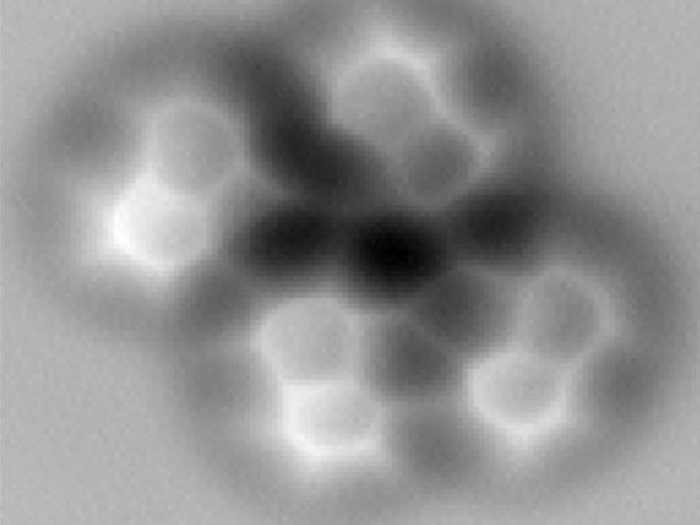
A cafe outside of Aquas Calientes in the Cuzco region of Peru has perches for wild parrots that come and feed on seed and fruit left out for them," said photographer Adam Lichtcsien, who entered this image into the National Geographic Traveler Photo Contest. "This curious little fella was peeking out from behind a leaf to get a better look at me. Apparently he was entertained by the odd human with the camera because he let me get only a few inches away, where my ring light could better illuminate his beautiful feathers.
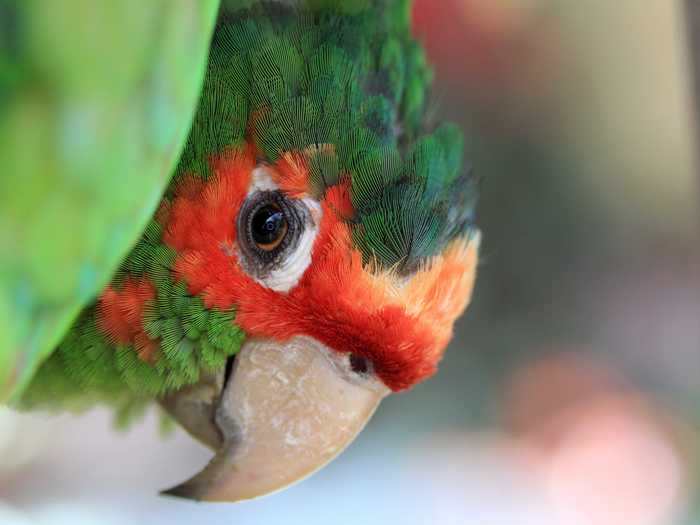
Sleep researchers found that channels (seen in blue in the image below) are created by shrinking neurons to allow waste to be flushed out of the brain during sleep. The resulting image was a beautiful network of colors.
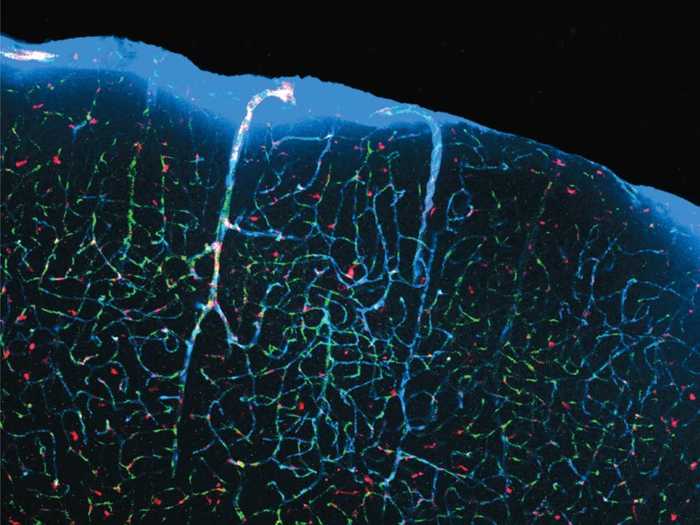
Giant mirrors installed on a Norwegian mountainside will be used for the first time to bring sunlight to the town of Rjukan during winter. Rjukan, shaded by mountains, doesn't receive direct sunlight between September and March; the mirrors adjust to follow the sun and reflect light down onto the town.
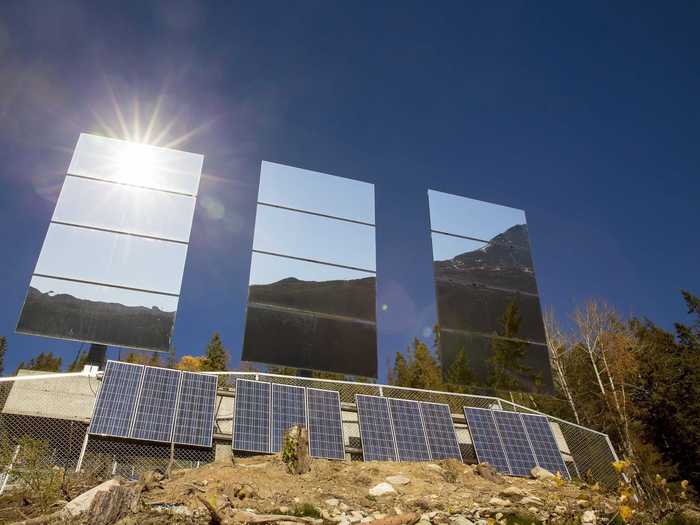
Using two sets of data from the European Space Observatory's (ESO) VISTA telescope, scientists were able to make the most accurate 3D map yet of the bulge of the Milky Way. The three-dimensional location in the map resulted in this fabulous artist's impression.
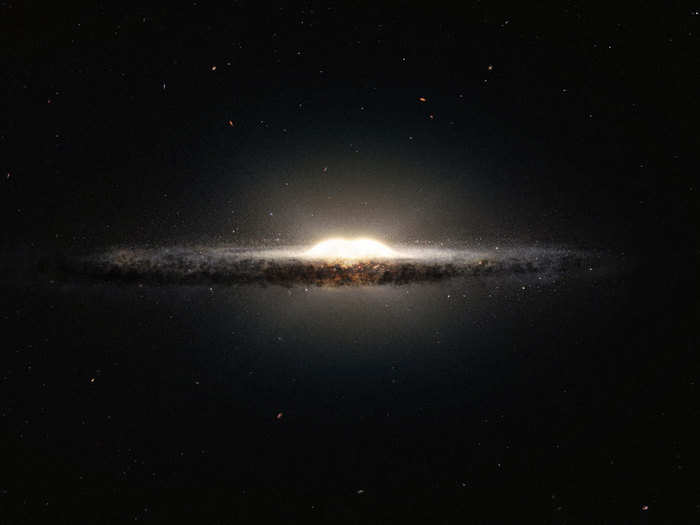
The Olinguito was the first carnivorous mammal discovered in the Americas in the last 35 years. A relative of the raccoon, the Olinguito is super adorable.
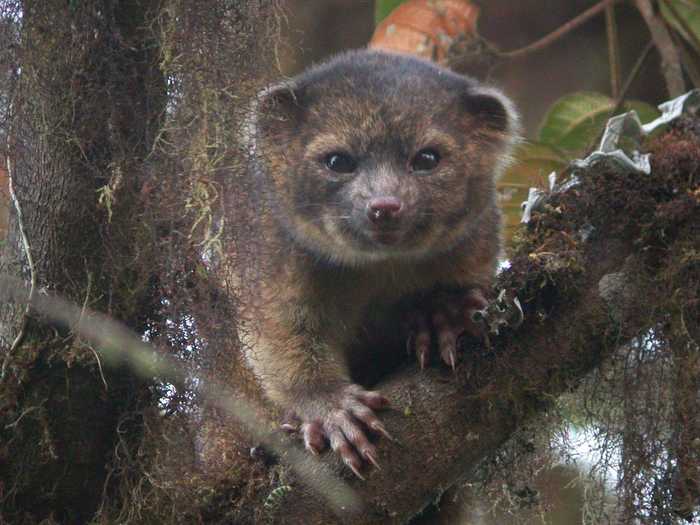
Recording-breaking blooms of the algae Enteromorpha prolifera washed up on China's beaches in Shandong province over the summer. It's not toxic to people, but it is to other marine life, hogging most of the oxygen in the ecosystem and doing a fair amount of damage.

This satellite picture of China from October shows just how bad its smog problem is. Monitors say that air pollution reached up to 40 times the standard set by the World Health Organization in some parts of the country.
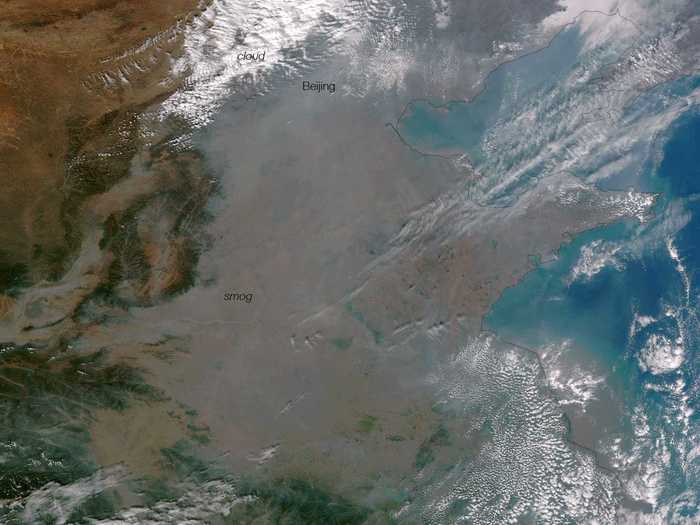
This picture was taken on a game drive in the Addo Elephant National Park, the third largest national park in the Eastern Cape, South Africa," photographer Natalie Murray, who entered the photo in this year's National Geographic Traveler Photo Contest, said. "The park contains a wide diversity of fauna, flora and landscapes and incorporates semi arid landscapes all the way to a marine reserve. These zebra were so calm and you just got the feeling they wanted to be photographed!
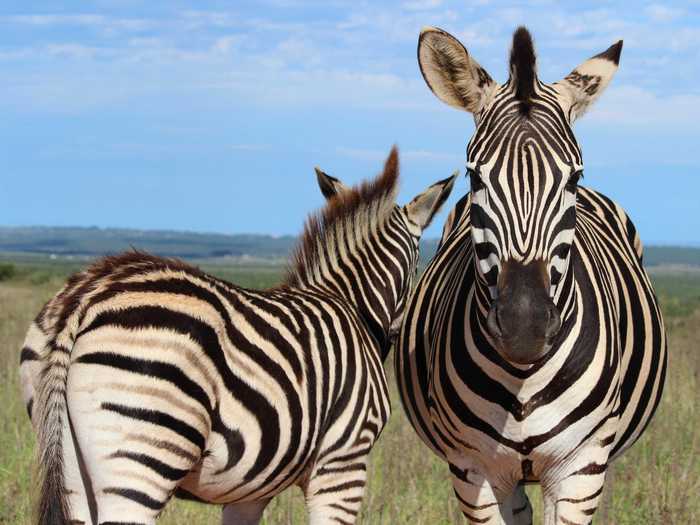
The Cygnus Wall is one of the highest concentrations of star formations in the North American Nebula. It's located approximately 1,800 light-years away from Earth. This picture was taken by veteran astrophotographer Bill Snyder over an 18-hour period.
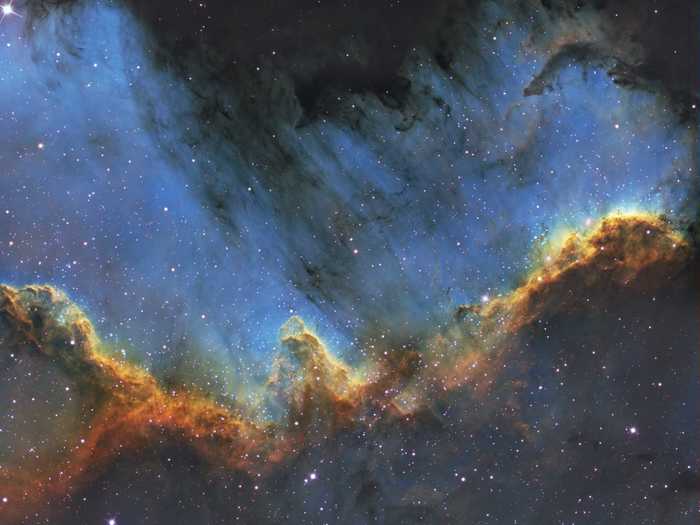
Source: Stunning Photo Of Cosmic 'Cygnus Wall' Captured By Amateur Astronomer
Veteran astrophotographer Bill Snyder captured this image of the Cygnus Wall, which is the most active region of star formation in the North America Nebula. Snyder took this photo over more than 18 hours of exposure in 2013 from Heavens Mirror Observatory in California's Sierra Nevada Mountains. He used a Planewave 17” telescope equipped with an Apogee U16 camera, as well as a Paramount ME mount and Astrodon Ha5nm, OIII3nm, SII5nm filters, to capture the image.
A photographer from the United States watched a female jaguar attack a male companion near a river in Brazil, and caught the moment on film. The image won a spot in the Wildlife Photographer of the Year Competition.
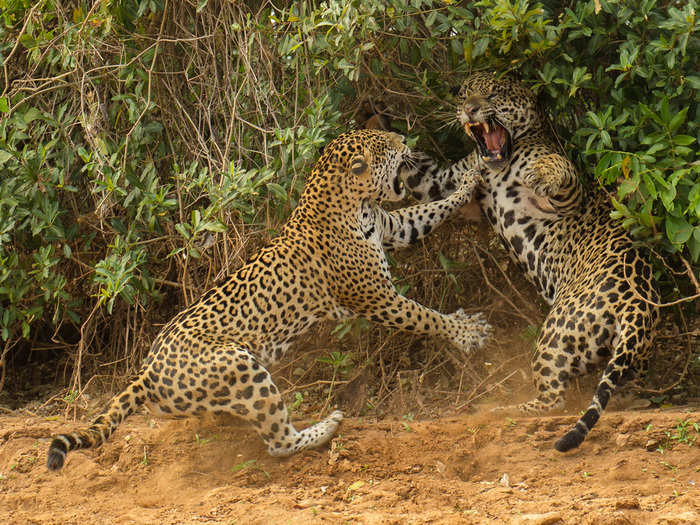
A remote camera was probably just a few feet in front of this frog when it jumped up and photobombed NASA's LADEE launch in Virginia. A representative from the Wallops/Mid-Atlantic Regional Spaceport confirmed that the photo is real, and said the frog was probably spooked by the launch noises.
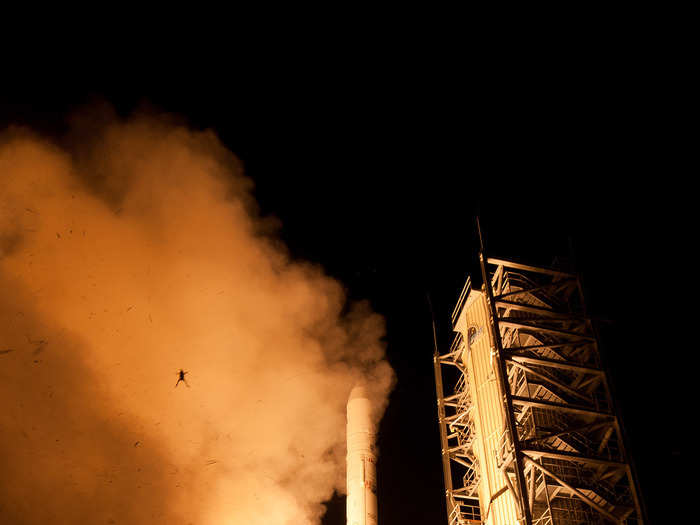
Sergey Gorshkov of Russia photographed Plosky Tolbachik, a volcano in central Russia, from a helicopter when it erupted last November for the first time in 36 years. The image won a spot in the Wildlife Photographer of the Year Competition.
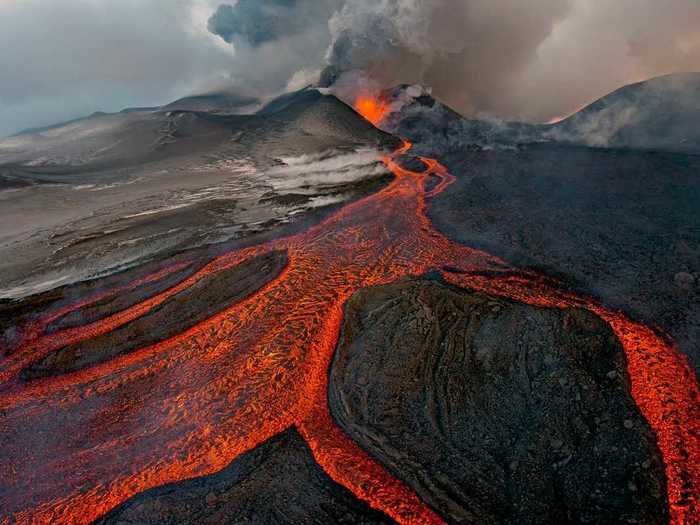
This magnified image of a veiled chameleon embryo has been stained to highlight the cartilage (blue) and bone (red). It was a Nikon Small World Photography contest winner in October.
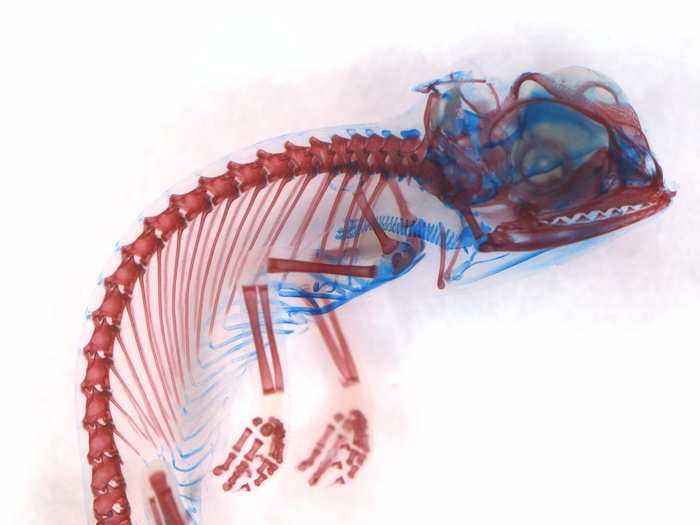
An aerial photo captures the beauty of Croatia's Plitvice Lakes National Park. The park is made up of cascading lakes that range in color from green to blue to grey. The lakes were created when shallow basins formed by the elements filled with water, a natural phenomenon.
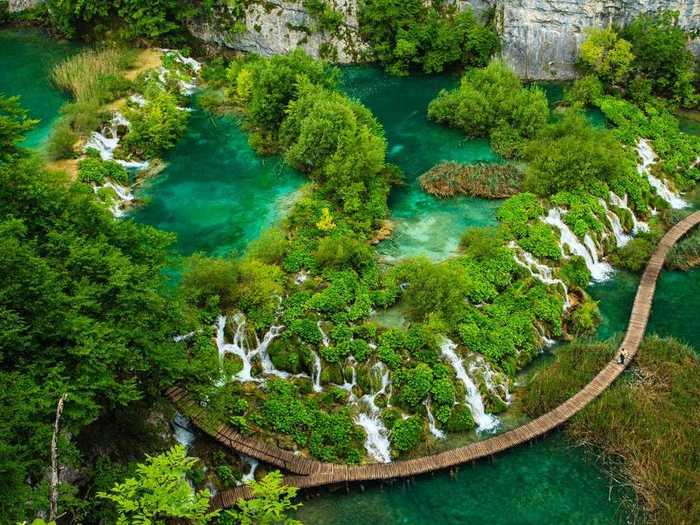
A pilot took this photo of the Soyuz spacecraft, which carried the Olympic torch on its way to Sochi, upon its return to Earth.
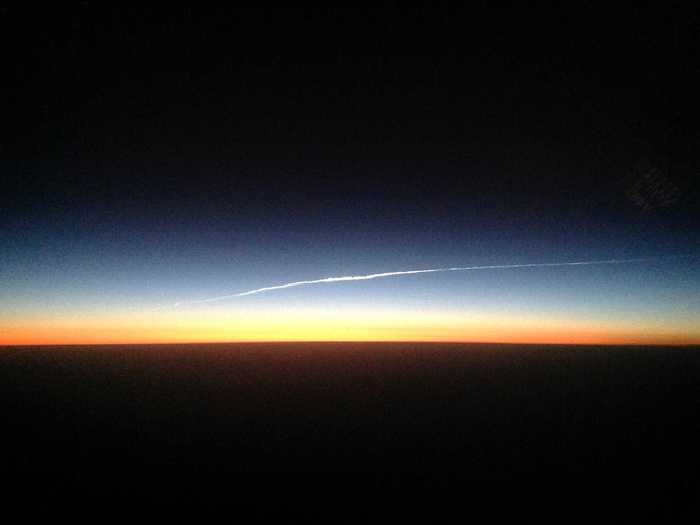
Chicago monument "Cloud Gate," better known as "the bean," wore a layer of ice as a major blizzard dropped just under 10 inches of snow on Chicago in March.

British ice cream wizard Charlie Francis created a glow-in-the-dark ice cream using synthesized jellyfish proteins — the same ones that allow these marine animals to produce light inside their bodies. It costs $220 a scoop.

More than 10,000 fish were found dead this fall in a lake in the southern Chinese city of Shenzhen. The cause? Sewage and waste pouring in from a drain. This is not the first time this has happened in Shenzen — last year 50,00 fish were found floating in a pond near an industrial area.
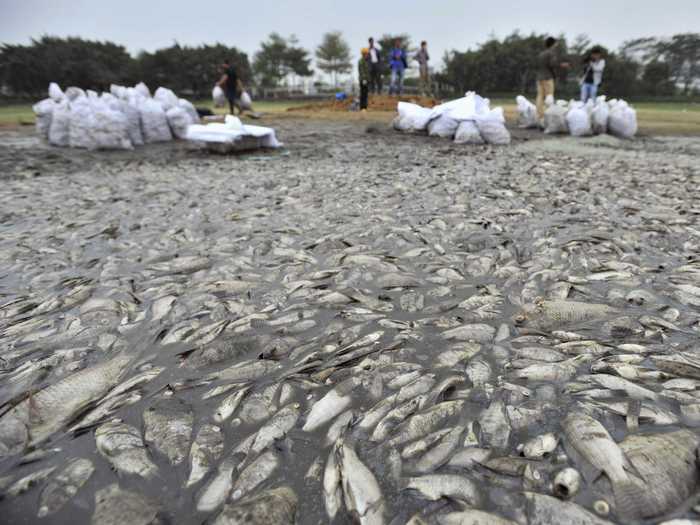
Paleontologists revealed in November that they'd discovered a new dinosaur, the Lythronax argestes, identified as a cousin of the Tyrannosaurus and whose name means "king of gore."
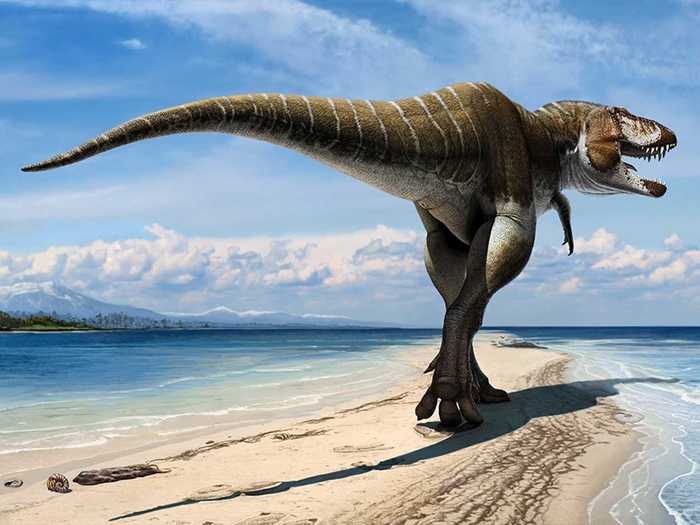
A farmer searches for sheep caught in a snow drift in Northern Ireland in March. A heavy snowfall last winter caused snowdrifts of up to 18 feet, leaving at least 140,000 homes and businesses in Northern Ireland without power.
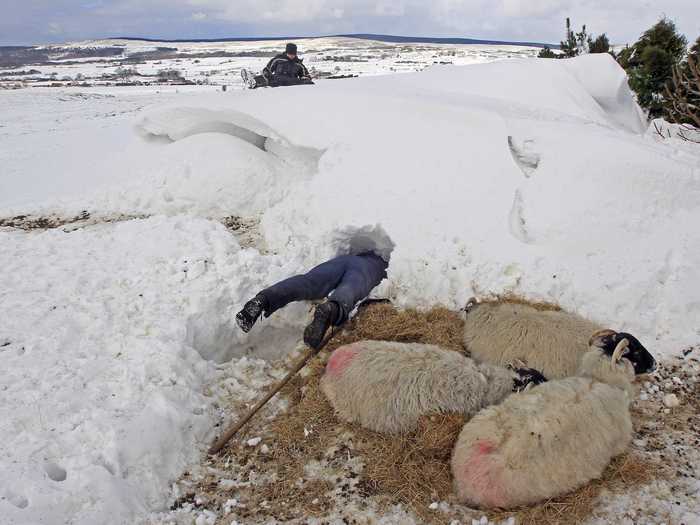
Dr. Kieran Boyle of the University of Glasgow in Scotland took this image of a brain cell in the hippocampus as it received excitatory contacts. It was a finalist in Nikon's Small World Photography contest.
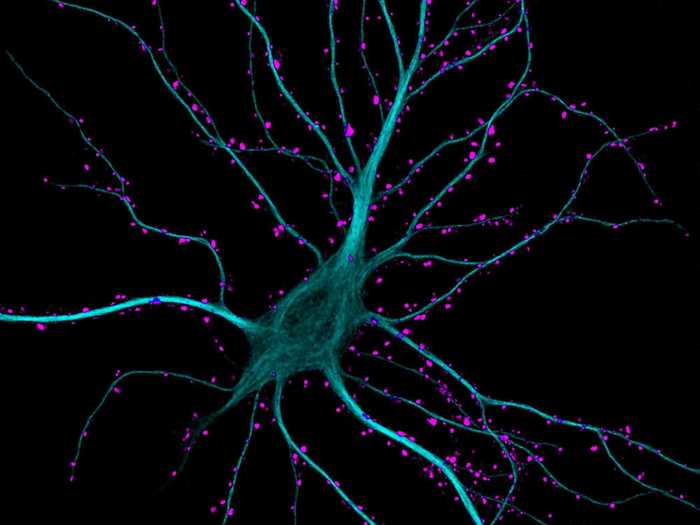
Indonesia's Mount Sinabung, which has been actively spewing lava and ash for the last couple of months, erupted six times on Nov. 25. A Reuters photographer took this eerie photo in the early morning of November 25.
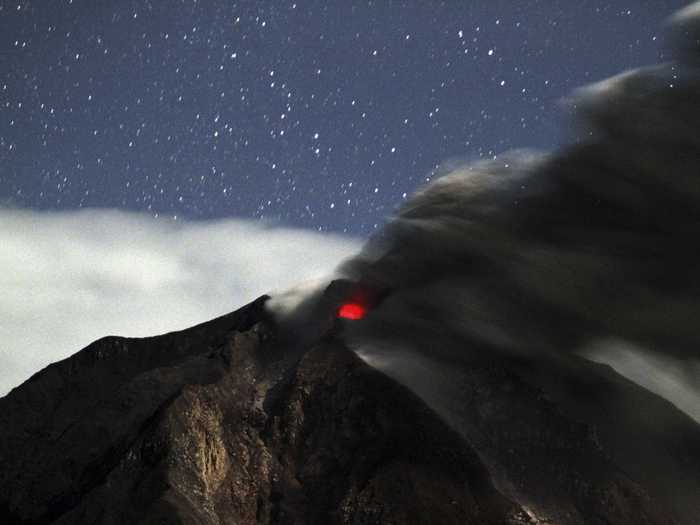
Seismologists discovered an active volcano hidden beneath a massive ice sheet in West Antarctica in November. This is the first time anyone has caught magma in action so far from the coast.
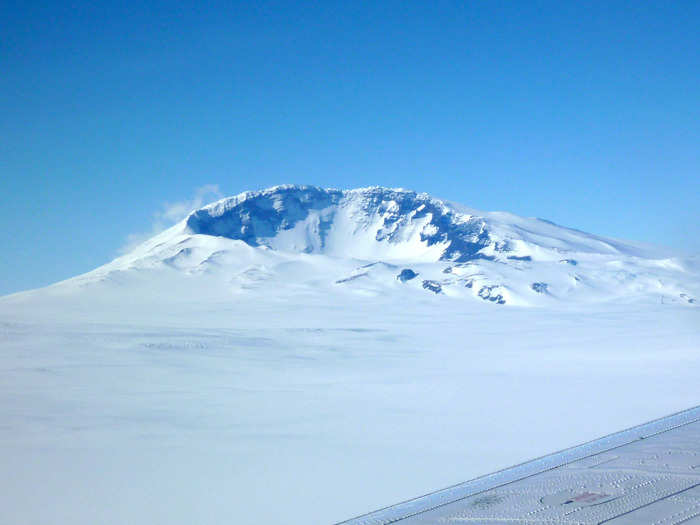
NASA's Cassini spacecraft clicked a cosmic shot of Earth from far beyond Saturn. This is only the third time in history we've gotten this chance to take a picture from this far out in our solar system.
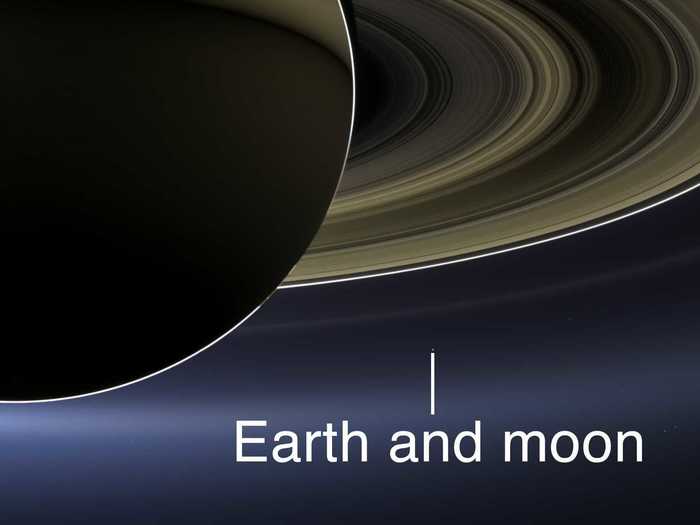
Every year the London Zoo weighs and measures its animals — a process that takes quite a long time for the zoo's 19,000 residents. Here, a keeper uses worms to entice Tammy, a tamandua, to stay on the scale.
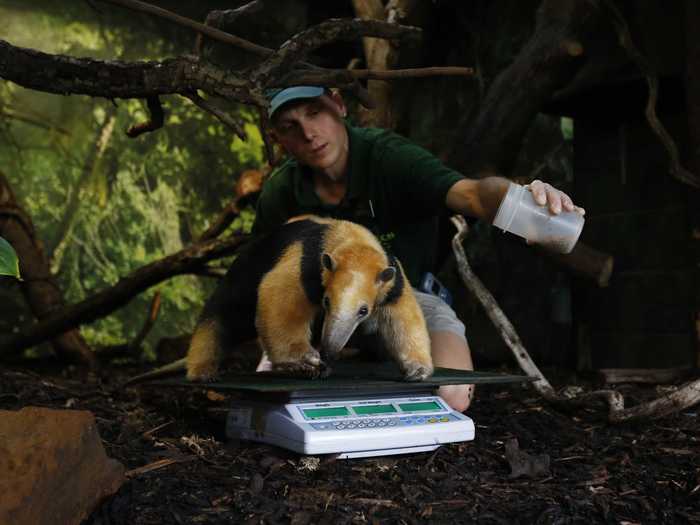
The Corona Fire Department, battling a wildfire about 90 miles away from Los Angeles that started in August, posted photos of its efforts to its Facebook page, including this incredible shot of a DC-10 air tanker flying over a residential area.
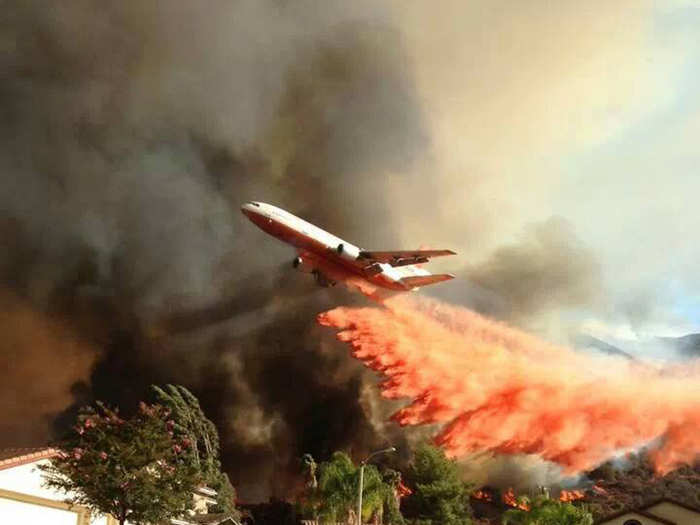
The first high-resolution global map of changes in forest cover over the last 12 years shows which parts of the world are losing forests at an alarming rate. Between 2000 and 2012, 888,000 square miles (an area roughly the size of Mexico and Arizona combined) of forest was lost, while just 309,000 square miles (an area about half the size of Alaska) of new forest was established.
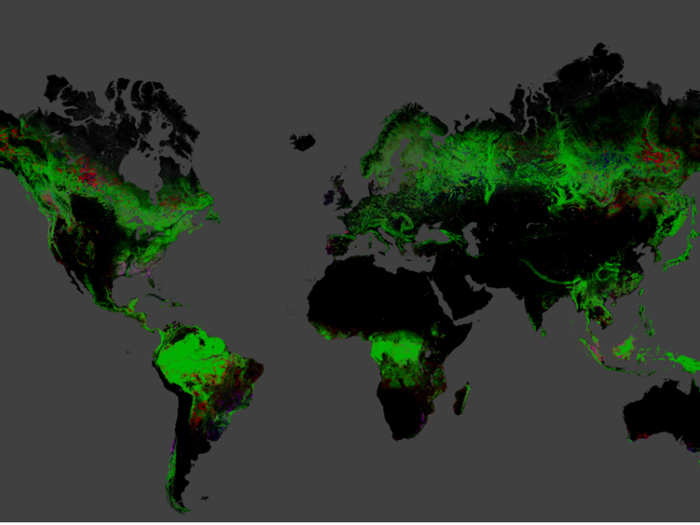
This photograph of a thunderstorm at False Kiva, Utah, was the second-place winner of the 2013 National Geographic Traveler Photo Contest.

A photographer captured this photo of a pig swimming near boats at Big Major Cay in the Bahamas. People brought them to the island years ago, and they show no fear of boats since they get a lot of free food that way. The image was entered in the National Geographic Traveler Photo Contest.

A rare 18-foot-long dead oarfish was found in October, in Toyon Bay off the Catalina Island. It took 15 adults to haul the silvery fish out of the water and up to the beach.
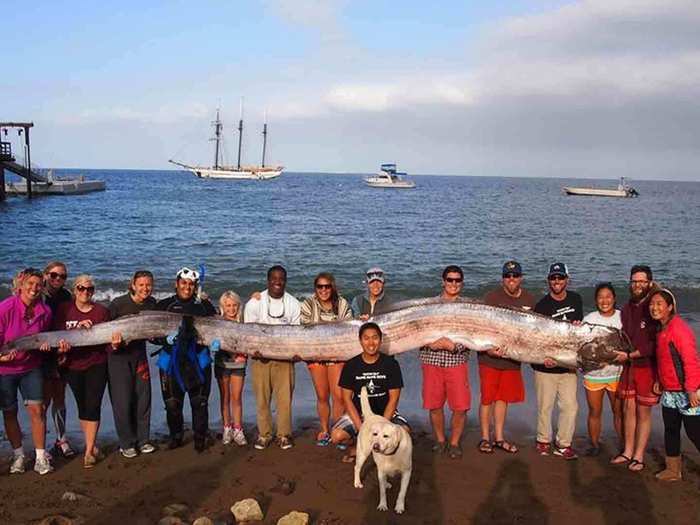
NASA released this incredible hypercolor map of Mercury, the first full map of the sun's closest planetary neighbor. The Messenger probe snapped it as it flew by the planet on its way through the solar system.
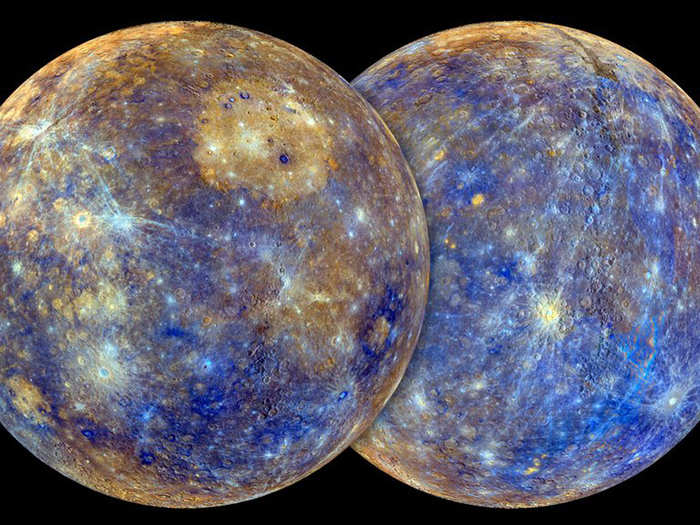
A submarine about the size of a baseball bat has given researchers access to Antarctica's subglacial Lake Whillans, one of the last unexplored places on Earth. A video camera on the mini-sub captured this view as it descended a 2,600-foot-deep borehole to explore and capture images of the lake for the first time.
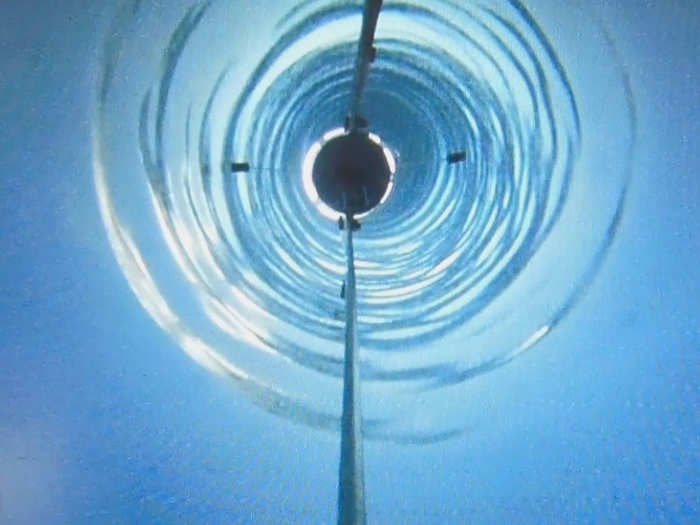
A field of parked cars and trucks sits partially submerged near Greeley, Colo., in September after floods destroyed an area the size of Connecticut.
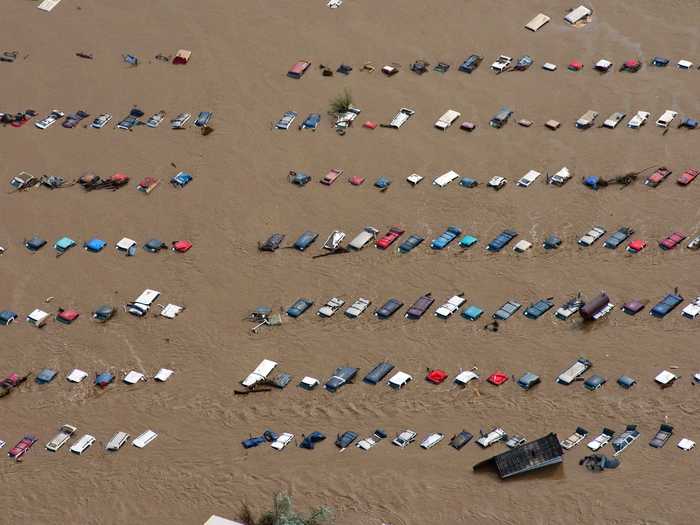
German photographer Wolf Ademeit took this photo at a local zoo. He spent a lot of time getting to know the primates, whom he saw display love, sadness, fun, and violence.
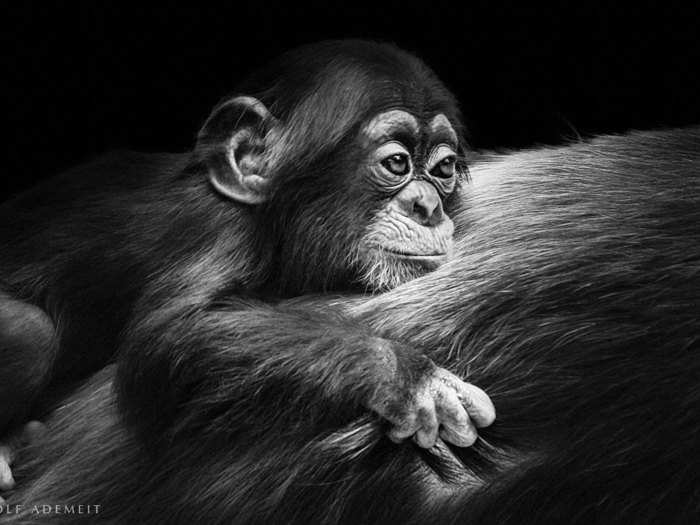
Business Insider's Robert Johnson took this picturesque photo during a tour of Guantanamo Bay, Cuba. It's a stark contrast to the gloomy life led by the prisoners, and even some of the troops, who reside there.
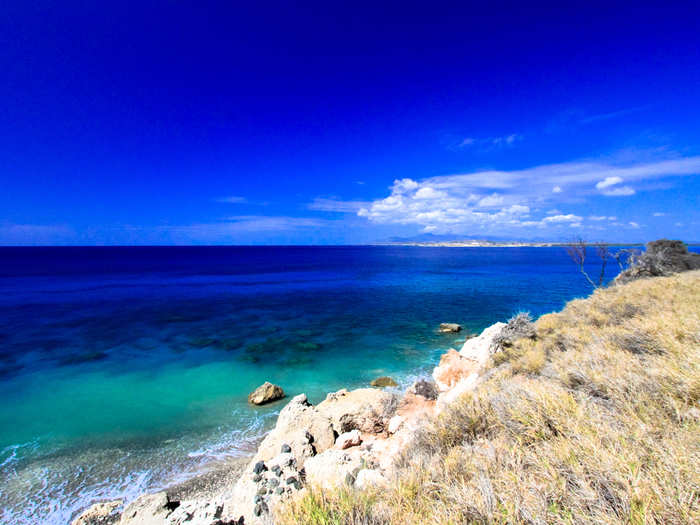
Astronomers spotted an asteroid in September with comet-like tails, something they've never seen before. Even though comets and asteroids come from the same place, they differ based on what they are made of as well as their orbits. One theory for this odd occurrence is that the asteroid could be rotating so fast that dust is slipping off the surface of the rock and flying out into space.
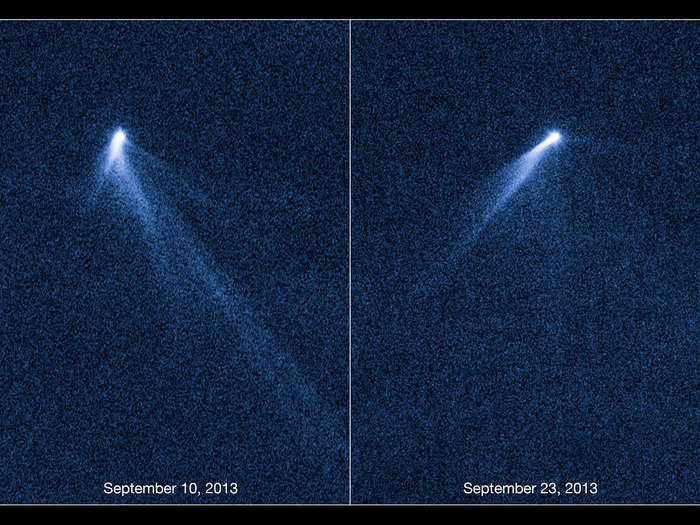
A geologist collects samples in the Utah desert for the Mars Desert Research Station (MDRS) in March. The MDRS aims to investigate the feasibility of a human exploration of Mars and uses Utah's Mars-like terrain to simulate working conditions on the red planet.
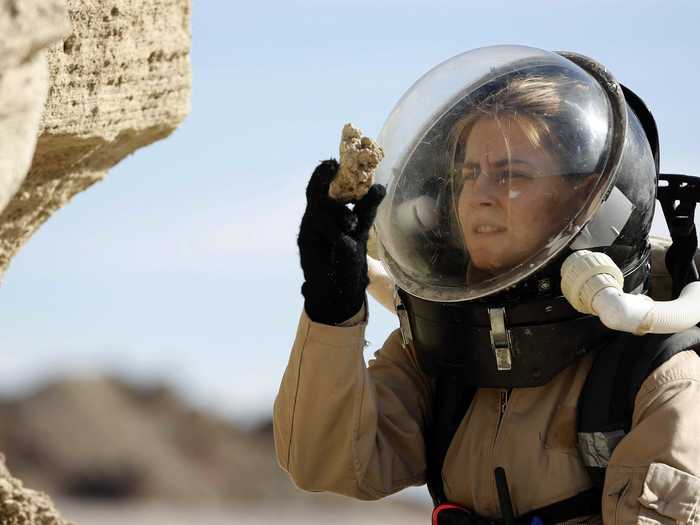
Greg du Toit of South Africa won the Wildlife Photographer of the Year award for this shot of African elephants taken at a waterhole in Botswana’s Northern Tuli Game Reserve. He calls the photo "Essence of Elephants."
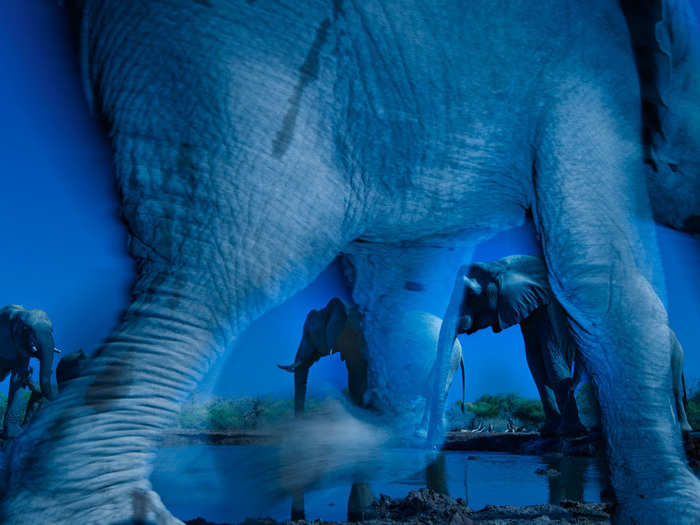
A newly discovered planet, GJ 504 b, glows from the heat of its formation, making it deep magenta in color. It's the lowest-mass planet to orbit a star like our sun, and was detected using a technique called direct imaging — which means scientists could actually see what color it is.
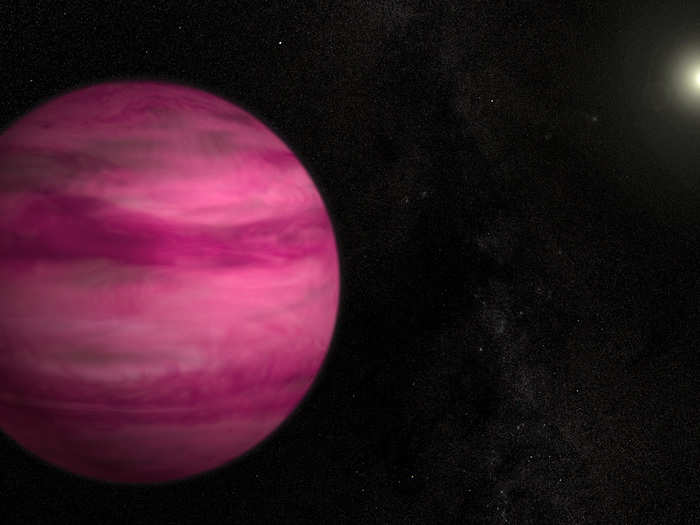
This dizzying view of the limestone pinnacles in China's Zhangjiajie National Forest Park is a once-in-a-lifetime sight. The pinnacles are what remain of quartzite sandstone mountains after millions of years of water erosion.
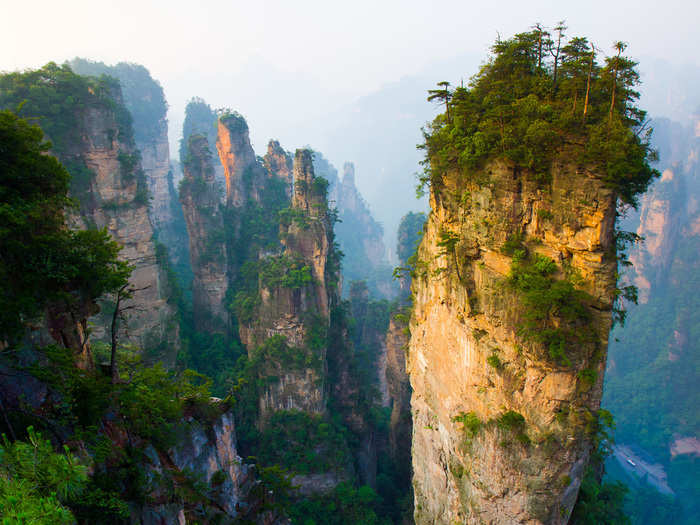
The new baby panda born at the National Zoo on August 23 weighed in at just 4.8 ounces. Not only had it yet to develop its distinctive black and white markings, but zoo keepers wouldn't know if it was male or female for another two to three weeks.
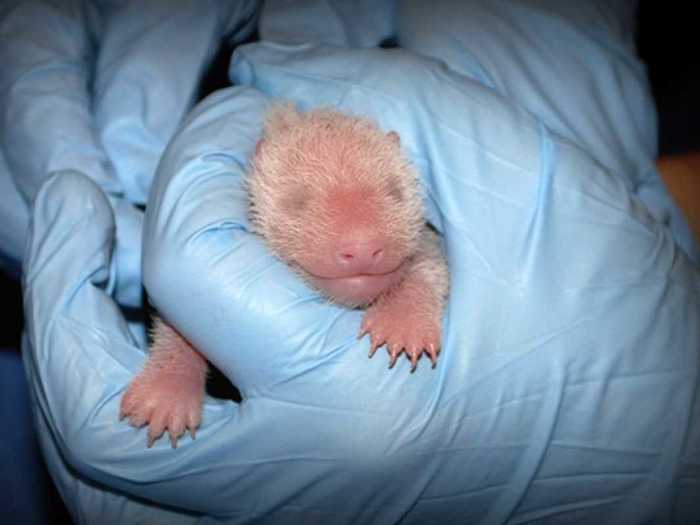
One of the cities most affected by China’s rapid industrialization and pollution is Wuhai City in Inner Mongolia. These chickens were turned black from the devastating pollution. Many other species in the area have been turned black as well.
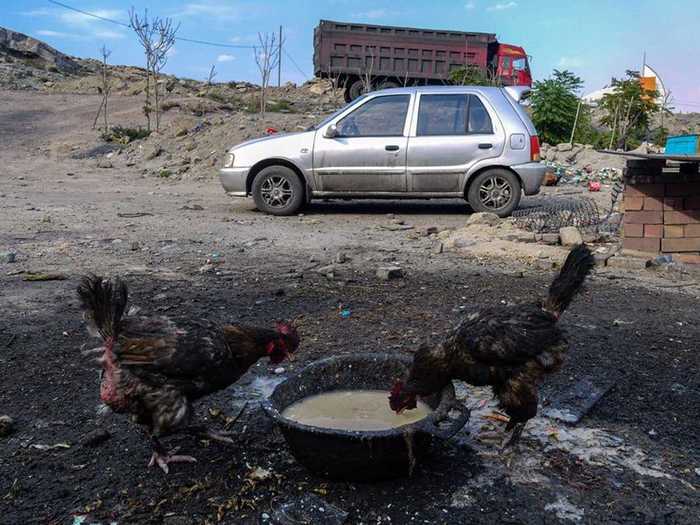
A photographer from South Africa found a lesser noddy, a blue-gray bird, entangled in the large web of a red-legged golden orb-web spiders. If you think this spider couldn't eat a bird, think again: The female spiders can grow to the size of a human hand. This photo was entered into the Wildlife Photographer Of The Year contest.
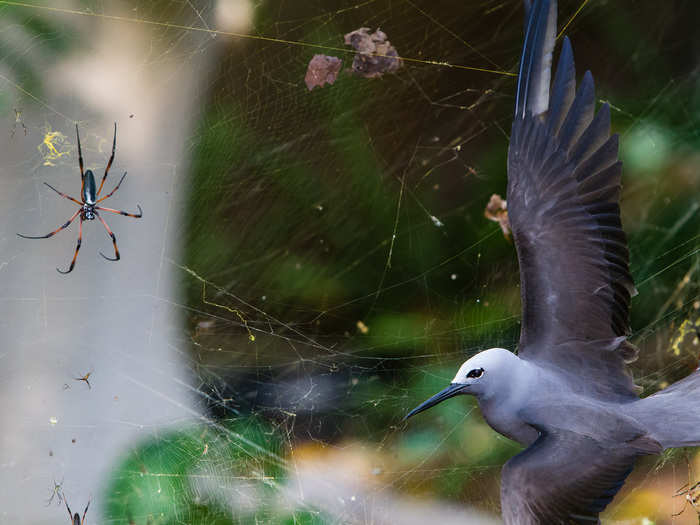
Landscape photographer Rolf Maeder managed to shoot these Grand Canyon lightning storm photos, something very difficult to do. “Catching the lightnings is a guess where they will appear,” said Maeder. “The real outcome can only be seen at its full glory, back at home on the computer."
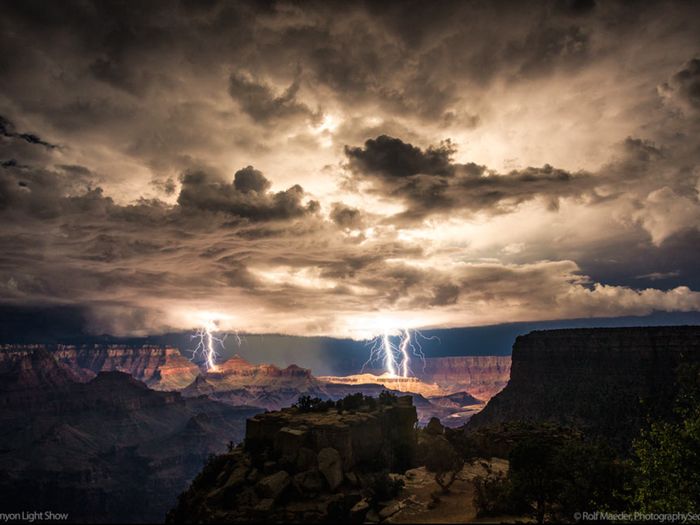
That's not snow this kitten is treading on — it's ash, spewed from North Sumatra's volcano Mount Sinabung. The volcano forced ash 2.5 miles into the sky, followed by hot clouds and blazing lava. In September it started spewing ash and lava for the first time since 2010. Before then, the volcano had been silent for at least a few hundred years.
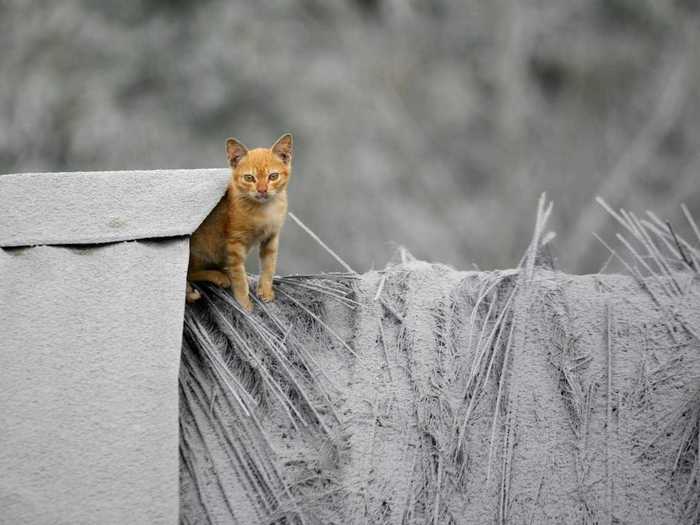
A digital camera trap captured the first photos of a golden eagle attacking a young sika deer in southern Russia. The camera trap was originally set up by the Zoological Society of London and the Wildlife Conservation Society to photograph Siberian tigers, but found this brief footage on the tapes.
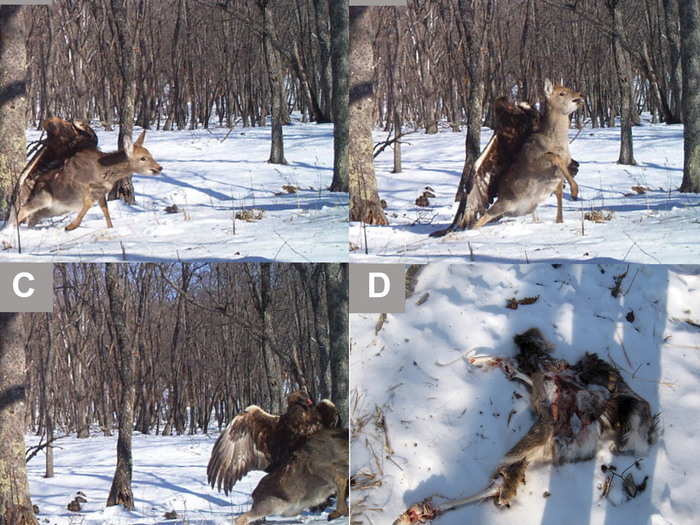
This map shows the oldest light in our universe, as detected with the greatest precision yet by the Planck telescope. The ancient light, called the cosmic microwave background, was imprinted on the sky when the universe was 370,000 years old.

Two Apollo-era rocket engines were discovered in the Atlantic Ocean last March by an expedition under the command of Amazon's CEO and founder Jeff Bezos. Scientists used underwater vehicles to recover the F-1 engines, the most powerful ever fired to boost rockets from the Apollo space program.

Source: Apollo-Era Rocket Engines Pulled From The Bottom Of The Atlantic Ocean
Disclosure: Jeff Bezos is an investor in Business Insider through his personal investment company Bezos Expeditions.
Artist and researcher Nickolay Lamm created sea-level-rise maps depicting what major U.S. monuments would look like over the next century if we don't do anything to stop global warming. Here is a rendering of what Boston Harbor would look like if the sea level rose 25 feet.

The next step in food evolution, Dutch scientist Mark Post's artificial "test tube" burger uses less space and fewer resources than raising livestock. It's not quite ready yet, but could become commercially available in 10 to 20 years.

This alligator, caught in September and weighing in at 723.5 lbs, now holds Mississippi's record for heaviest alligator. At 13 feet, 4.5 inches, the massive gator was two inches shy of the current length holder, a 13-foot 6.5-inch alligator caught in 2008.
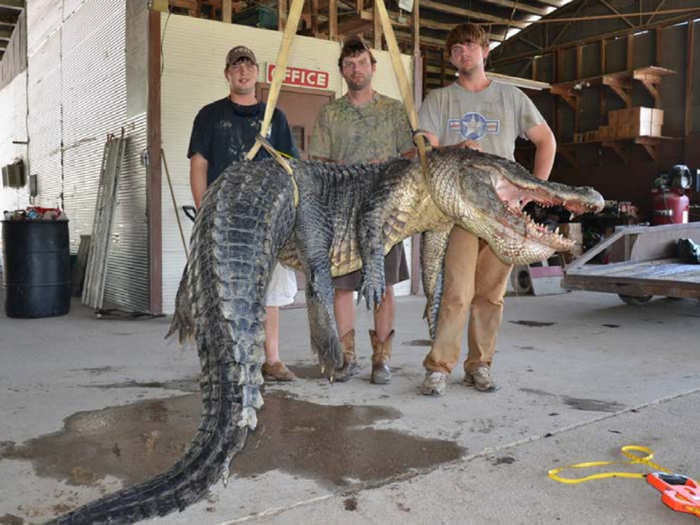
A photographer captured a bird silhouetted by the partially-eclipsed sun over southern Lebanon. Sky gazers around the world were treated to this rare hybrid solar eclipse in which an annular solar eclipse (when the only visible part of the sun appears as a bright ring around the moon) transitions into a total solar eclipse (when the moon completely blocks the sun).
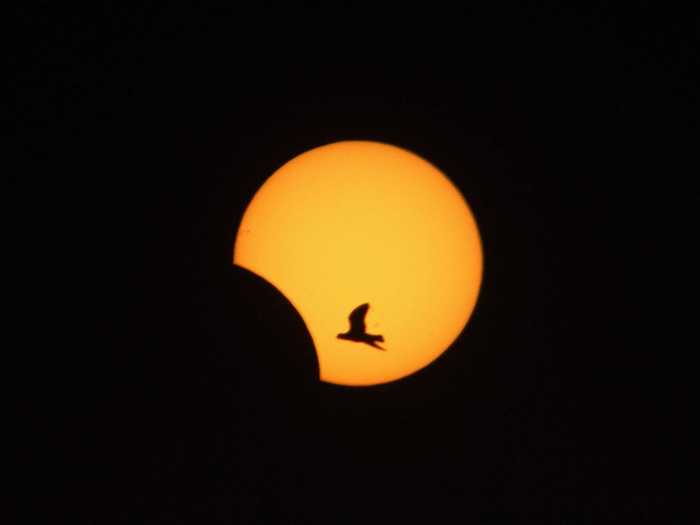
Karthik Keyan's macro-photography beautifully captures the world's tiniest, most under-appreciated creatures. This close-up portrait of a dragonfly makes it look like it is smiling.

Science is full of discovery.

Popular Right Now
Popular Keywords
Advertisement